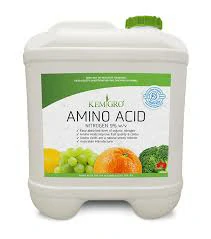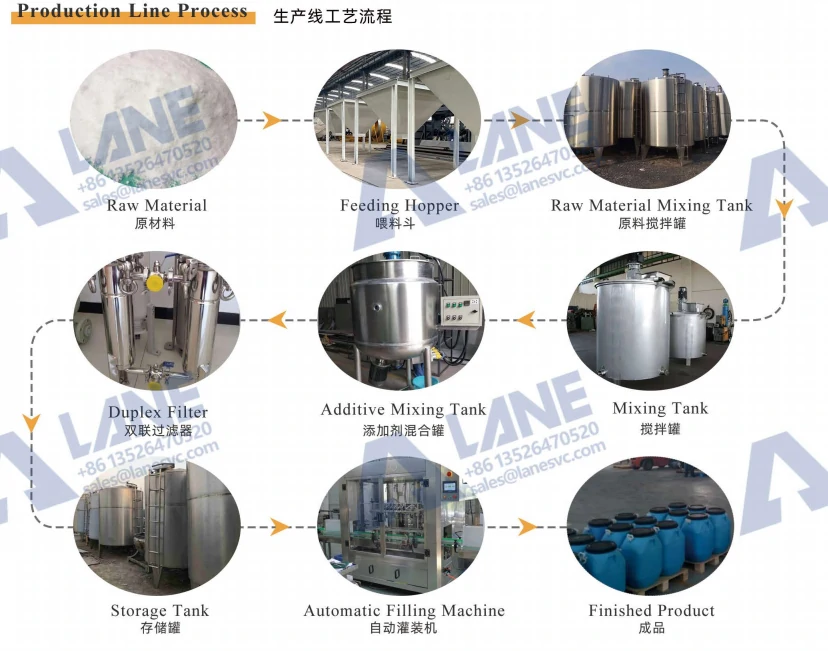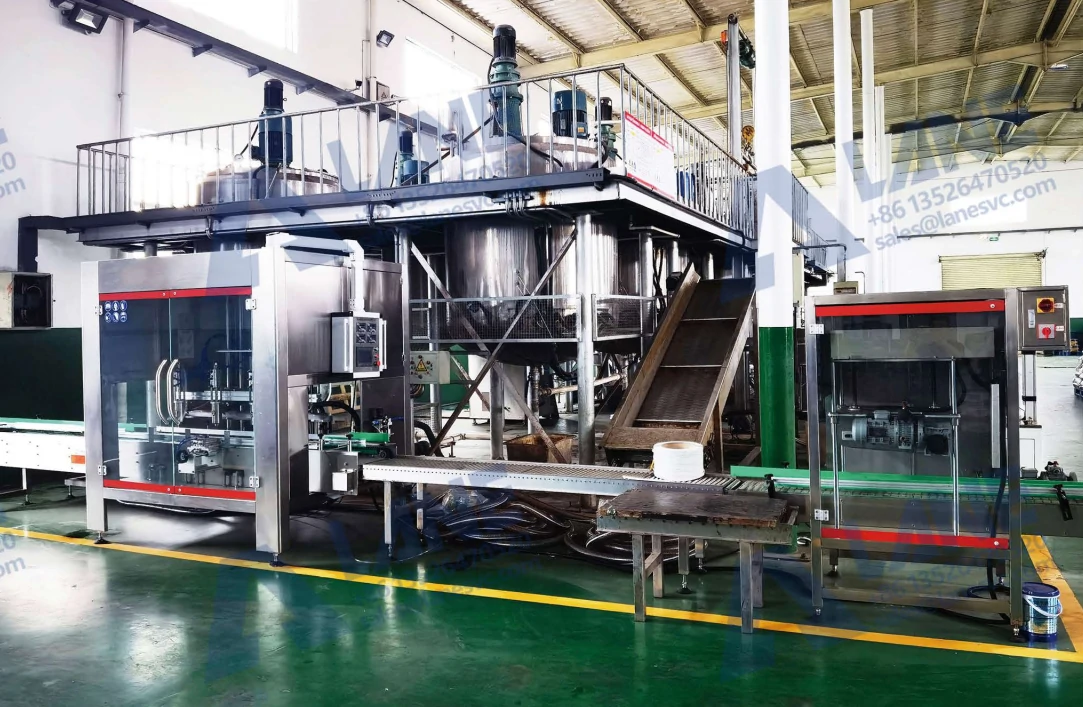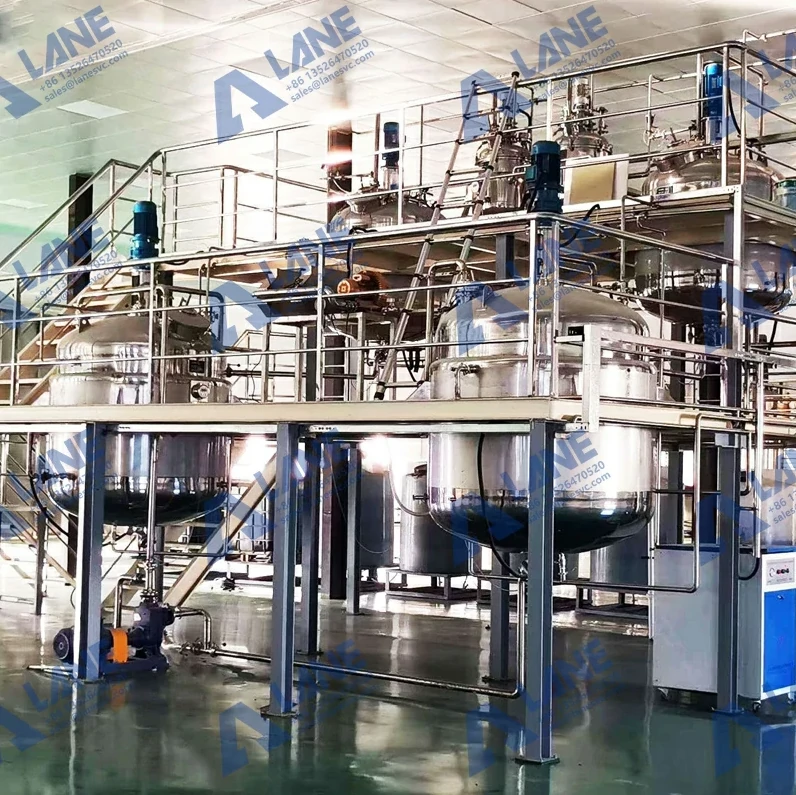
Unlocking Agricultural Potential with Amino Acid Liquid Fertilizer Manufacturing Equipment
In modern agriculture, the demand for efficient and sustainable nutrient solutions has given rise to amino acid liquid fertilizer manufacturing equipment. This advanced technology enables farmers and fertilizer producers to manufacture nutrient-rich and environmentally friendly fertilizers, thereby improving soil health, enhancing crop quality and increasing yields. Unlike traditional fertilizers, amino acid liquid fertilizers are biologically active, highly soluble and specifically designed to meet the nutritional needs of modern crops. By integrating amino acid liquid fertilizer manufacturing equipment, enterprises can achieve consistency, cost-effectiveness and large-scale production, while aligning with the global trend towards green agriculture.
Amino acids are the building blocks of proteins, and in agriculture, they serve a vital role in enhancing plant metabolism, stress resistance, and nutrient absorption. When processed using amino acid liquid fertilizer manufacturing equipment, the result is a fertilizer that:
Promote rapid nutrient absorption by crops.
Stimulate photosynthesis and chlorophyll synthesis.
Enhance drought, salt, and disease resistance.
Increase soil microbial activity and maintain long-term soil fertility.
Promote high-yield and high-quality crops.
Farmers around the world are turning to amino acid liquid fertilizers because they are not only efficient but also sustainable, perfectly aligning with organic agricultural practices.

The efficiency and quality of amino acid liquid fertilizer manufacturing equipment largely depend on its core components. Each part of the system plays a crucial role in ensuring that raw materials are processed accurately, nutrients are preserved, and the final fertilizer product meets agricultural standards.
(1) Raw Material Mixing Tank
The raw material mixing tank is where the production begins. Organic sources of amino acids—such as soybean meal, fish protein hydrolysate, or animal by-products—are combined with water and other base ingredients. This tank ensures uniform blending, creating the ideal starting point for fermentation. Advanced mixing technology also prevents sedimentation and enhances consistency.
(2) Fermentation Tank
At the heart of amino acid liquid fertilizer manufacturing equipment is the fermentation tank. Beneficial microorganisms break down complex proteins into bioavailable amino acids under controlled temperature, pH, and oxygen conditions. A high-quality reactor ensures stable microbial activity, shortens fermentation cycles, and maximizes nutrient release. LANE’s tanks are designed with automatic monitoring systems for precision control.
(3) Additive Mixing Tank
After fermentation, additives such as micronutrients, enzymes, or growth-promoting compounds are introduced in the additive mixing tank. This step tailors the fertilizer to meet specific crop requirements and enhances its commercial value. The flexibility of this tank allows farmers to produce customized formulations for different soil types and climates.
(4) Filtration and Separation Unit
To guarantee a clean, stable, and market-ready product, the slurry is passed through filtration and separation systems. Dual filters and liquid-liquid centrifugal extractors remove unwanted residues, pathogens, or undigested particles, ensuring that the final amino acid liquid fertilizer has a smooth texture and is safe for direct application.
(5) Sterilization and pH Adjustment System
Some production lines include UV sterilizer to eliminate harmful bacteria and maintain product stability. A pH adjustment system further ensures the fertilizer remains in the optimal range for nutrient availability, preventing degradation during storage.
(6) Storage and Packing Tanks
Once processed, the amino acid liquid fertilizer is stored in large stainless steel storage tanks designed to maintain quality before packaging. Automatic packing machines then fill bottles, drums, or intermediate bulk containers (IBCs), ensuring efficient distribution.
Together, these core components form a seamless production chain where efficiency, quality, and safety are prioritized. By integrating automation and smart control systems, amino acid liquid fertilizer manufacturing equipment not only reduces labor costs but also guarantees a consistent output suitable for global agricultural markets.

| Process | Equipment Involved | Output |
| Raw Material Input & Pre-Mixing | Raw Material Mixing Tank | Uniform slurry of protein sources |
| Fermentation | Fermentation Tank | Breakdown of proteins into amino acids |
| Additive Integration | Additive Mixing Tank | Customized nutrient-rich formulations |
| Filtration & Separation | Filtration Unit | Clean, residue-free liquid fertilizer |
| Sterilization & pH Control | Sterilization & Adjustment System | Stable, pathogen-free fertilizer |
| Storage & Packing | Storage Tank & Automatic Packaging Machine | Market-ready amino acid liquid fertilizer |
This structured workflow shows how each step in amino acid liquid fertilizer manufacturing equipment is interconnected, ensuring smooth operation and premium fertilizer output.
The use of amino acid liquid fertilizer manufacturing equipment is not limited to large factories. Medium-sized farms, cooperative groups and agricultural technology companies worldwide are increasingly adopting this equipment. A notable application in Southeast Asia is that rice farmers there have introduced amino acid liquid fertilizer produced by advanced fermentation technology. As a result, the yield per hectare has increased by 15%, while the reliance on chemical nitrogen fertilizer has been reduced.
Another case study comes from a greenhouse tomato farm in Spain. By integrating LANE’s amino acid liquid fertilizer manufacturing equipment into their nutrient management system, the farm achieved not only higher productivity but also improved tomato flavor and longer shelf life due to the enhanced uptake of amino acids and micronutrients. Their annual revenue increased by nearly 20% within two growing cycles, showcasing the direct financial benefits of adopting advanced fertilizer production technologies.
In Africa, several pilot projects have demonstrated how decentralized, small-scale amino acid liquid fertilizer manufacturing equipment can help farmers convert agricultural residues into valuable fertilizers. These projects not only support soil regeneration but also create local employment and reduce waste disposal costs.
Such real-world applications confirm that the adoption of amino acid liquid fertilizer manufacturing equipment is not just a technological upgrade, but a sustainable agricultural transformation.


Selecting the right equipment supplier is of vital importance for the efficiency and profitability of fertilizer production. LANE has established its position as a global leader by providing amino acid liquid fertilizer manufacturing equipment that exceeds traditional expectations.
Firstly, LANE’s system is fully automated, significantly reducing the need for manual labor while maintaining the accuracy of pH value control, temperature management, and additive mixing. This ensures that each batch of fertilizer maintains the same high quality, which is crucial for enterprises that wish to expand their production scale.
Secondly, LANE’s equipment design combines modularity and flexibility. Farmers and enterprises can start with the basic configuration (such as raw material mixing tanks and fermentation reactors), and then gradually expand to additive mixing tanks, advanced filtration systems, and automatic packaging units. This scalability enables investments to be adapted to both small and large enterprises.
Thirdly, LANE places great emphasis on energy efficiency and sustainability. Their fermentation reactors and filtration systems have been meticulously designed to minimize energy consumption and reduce waste, which perfectly aligns with the global trend towards carbon-neutral agriculture practices.
Finally, LANE offers comprehensive after-sales support, including installation guidance, operator training, and long-term technical support. For global customers, this service-oriented model means peace of mind and a quicker return on investment.
LANE’s liquid amino acid fertilizer manufacturing equipment integrates advanced technology, sustainable engineering design and customer-centric services, providing unparalleled value in the highly competitive agricultural sector today.
The global agricultural sector is undergoing a fundamental transformation, which directly drives the demand for amino acid fertilizers. Farmers, agronomists, and policymakers are increasingly realizing that the chemical-intensive production methods are no longer sustainable. Soil degradation, reduced biodiversity, and fluctuating fertilizer prices are all pushing the market towards organic and biobased alternatives.
One of the most significant trends is the global move towards sustainable agriculture. Governments are promoting organic agriculture through subsidies and stricter fertilizer regulations. This encourages large producers and small farmers to explore the use of biological fertilizers produced by amino acid liquid fertilizer manufacturing equipment.
Another factor is the rise of precision agriculture. Farmers are seeking fertilizers that provide precise nutrition without overloading the soil. Amino acids, as natural chelators, can improve nutrient absorption efficiency. Products produced by high-quality amino acid liquid fertilizer manufacturing equipment can achieve consistent molecular composition, making them compatible with precision irrigation and water-fertilizer integration systems.
The growing demand for high-value crops such as fruits, vegetables, and ornamental plants is also fueling this trend. Consumers are willing to pay higher prices for products with better taste, higher nutritional value, and longer shelf life. Amino fertilizers have been proven to enhance these qualities, thus creating high-quality market opportunities.
Finally, global trade dynamics are reshaping fertilizer demand. Countries in Africa and Asia that rely on imports are seeking localized production solutions. By investing in amino acid liquid fertilizer manufacturing equipment, these regions can reduce their dependence on imports, stabilize domestic supply, and increase farmers’ incomes. These market forces collectively indicate that amino acid fertilizers are no longer a niche product but have become a core element of global agriculture in the future.
(1) Animal Feed Supplements
Amino acids are not only beneficial for plants but also essential for livestock health. By adapting amino acid liquid fertilizer manufacturing equipment, producers can develop feed-grade amino acid supplements that improve animal growth, immunity, and nutrient utilization. This creates a profitable crossover between agriculture and the livestock industry.
(2) Biostimulants and Plant Growth Regulators
With slight modifications, the same equipment can be used to create biostimulants that enhance plant stress resistance, drought tolerance, and germination speed. These high-value products are increasingly important as climate change challenges global farming.
(3) Waste Valorization and Circular Economy
Agricultural residues, food waste, and animal by-products can be transformed into amino acid solutions through efficient processing. By using amino acid liquid fertilizer manufacturing equipment, producers can reduce environmental pollution while turning waste into valuable inputs—closing the loop in a sustainable circular economy.
| Aspect | Amino Acid Liquid Fertilizer | Traditional Fertilizer |
| Nutrient Uptake | Rapid, highly bioavailable | Slower, sometimes leaches away |
| Stress Resistance | High, improves drought/salt tolerance | Limited |
| Soil Health | Boosts microbial activity | May degrade long-term fertility |
| Sustainability | Organic, eco-friendly | Often synthetic, polluting |
| Market Value | Premium, high demand | Commodity, price-volatile |
This table highlights why amino acid liquid fertilizer manufacturing equipment is a wise investment for modern producers.
The agricultural industry is constantly evolving, and amino acid liquid fertilizer manufacturing equipment is at the forefront of this transformation. This technology provides farmers and manufacturers with the necessary tools to meet global food demands in a responsible manner, through offering efficiency, scalability, and sustainability.
The advanced equipment and expertise of LANE not only ensure the smooth operation of production but also guarantee long-term profitability. For those enterprises that wish to invest in future fertilizer production, choosing LANE’s amino acid liquid fertilizer equipment is the key to unlocking growth, innovation, and global competitiveness.
For more details, please feel free to contact us.
Henan Lane Heavy Industry Machinery Technology Co., Ltd.
Email: sales@lanesvc.com
Contact number: +86 13526470520
Whatsapp: +86 13526470520
Leave a Comment
Latest Posts
LANE has more than 500 successful cases and is committed to providing customers with first-class solutions, high-end machinery and equipment, and one-stop pre-sales, sales and after-sales comprehensive customer service.